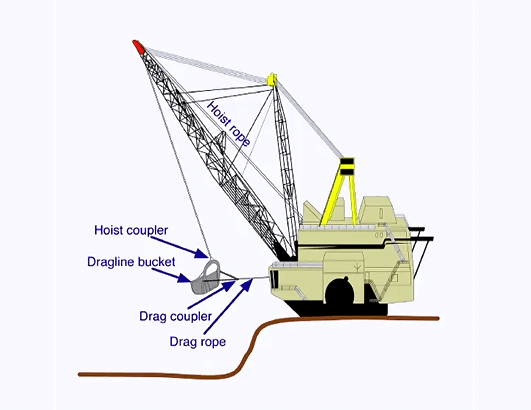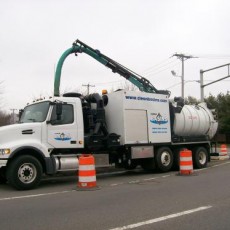The smart Trick of Excavating Contractors That Nobody is Talking About
Wiki Article
How General Contractor can Save You Time, Stress, and Money.
Table of ContentsA Biased View of Grading Contractors10 Easy Facts About Excavator DescribedRumored Buzz on Concrete Contractors5 Simple Techniques For Excavation Contractors Near MeExcitement About Excavation Companies


Scrapers or Pans dig deep into dirt in one location, haul and also dispose the soil in another area (trencher). It is difficult to match the performance of scrapers for cut/fill soil procedure if the haul distance is much less after that a mile. Scrapers are typically pulled by a rubber tire wheel tractor and also are sometimes pressed via the cut location by a bulldozer.
There are lot of times that scrapers are not used for website grading as well as a dump vehicle is used: the haul may be to long, the haul might go across roads where scrapers are not allowed, acid rock might be come across, equipment schedule, etc. Dispose trucks are in typical use and possibly require little conversation.
"Rock body" beds, on the other hand, have no tailgates and can unload any type of dimension rock, although their quantity capability is lessened. Compaction Equipment enhances the density of the soil and in some situations offers a smooth, rolled surface area.
Some Known Factual Statements About General Contractor
From a basic examination pit to percussion exploration to core exploration the owner has increasingly much more pricey options that generate increasingly much better information concerning the site underground. As an example, the Owner on a 100,000 SF building job may authorize twenty uninteresting locations with split spoon dirt samples taken up until rock is reached and afterwards core examples of rock.Understanding the type and quality of rock (from the core examples) and place of rock (from the dirts boring) is a real advantage in jobsite preparation. Alternatively, the Owner of a 100,000 SF structure might determine to continue with no geotechnical testing whatsoever. The decision concerning geotechnical screening is typically made by an Owner without any input from the Building Manager.
An expertise of the approximate place of the rock aids the Building and construction Manager to intend the series of actions following rock excavation. If rock is in one corner of a huge building project, for instance, the earth excavation can begin at the contrary end of the structure in order to start foundation work soonest.
Beginning the foundation work early would be a good concept if the rock can be eliminated by ripping. Nevertheless, if the rock is incredibly hard and calls for substantial blasting, it may be prudent to hold structure work until the blasting is completed. The Building Supervisor should coordinate these types of decisions as well as use all the technical day offered.
The Ultimate Guide To Excavation Companies
Unidentified excavation states that all rock informative post or various other unexpected products (excluding unsafe products) come across in the sitework will be the responsibility of the Service provider at no modification in contract cost. An unidentified excavation is simpler from a book-keeping standpoint as well as places the responsibility for geotechnical problems onto the Sitework Service provider.navigate here It's fantastic what a hefty rain can do to a building and construction task. Prior to the rainfall, the site may be completely dry, hefty tools effectively relocating earth, the various other trades efficiently doing their job.
In many locations of the globe, the Construction Supervisor should remember a straightforward reality: IT WILL RAIN. Good preparation can decrease the damages and disturbance of a hefty rainfall to a jobsite. Typically the excavation and also grading is left to the Sitework Service Provider (and their Foremen is responsible to manage as well as direct the hefty devices as well as operators).
For That Reason the Construction Supervisor need to be continually familiar with what rainfall will do to the job website. It is not unusual for the Sitework Foreman to work their heavy equipment for maximum efficiency as well as wish it does not rainfall. Among the very best means to prepare for rain is to incline all qualities to drain pipes as well as to smooth rolled the surface area before a rain.
Our Mini Excavator Statements
The Building Supervisor have to be discerning adequate to insure that heavy rainfall does not quit work on the project much longer than essential. Daily conversations with Sitework Foremen may be called for to achieve this objective. At any time excavation is needed listed below the existing water table on a job, the procedure of dewatering should be taken into consideration.In a truly cohesive dirt, the water travels so gradually through the clay or silt that dewatering is not generally necessary for the reasonably brief time of excavation. Dewatering might be required for a solitary ground excavation or for an entire job site. The most common dewatering methods are trench drains, deep wells as well as well factors.

Ground water infiltration can also be reduced by cutoff methods such as sheet loading. High dewatering costs have actually paled the earnings margins on far as well many jobs.
This alternative needs to always be thought about when evaluating the possibility of dewatering. Certainly the choice is just sensible if gravity can Check Out Your URL run the water to reduced ground. Trench drains can be reduced with a backhoe as well as full of a rugged, granular material (# 4 stone for example), but care has to be exercised in selecting the water outlet type and also location.
General Contractor Things To Know Before You Get This
A siphon, by meaning, uses air pressure to carry water from one altitude, up over an obstacle, to a lower elevation. The pipes in a siphon system have to be closed and some ingenuity is often required to completely load the siphon pipe. The siphon pipeline should be complete for the siphon to begin.A deep well consists of a pump, hose and an upright well casing. The pump consumption is at the base of the well case (normally some smashed rock is placed down there as a filter medium) (demolition). The water is pumped up the hose, out of the well case, as well as to a suitable discharge place.
In a crude sand, as an example, a big area can be pumped to near the pump intake elevation. A much less absorptive soil, on the various other hand, minimizes the efficiency of a deep well. Since the pump is generally at the end of the deep well, there are no height limitations as a result of vacuum lift, as well as deep wells can decrease the groundwater over 50 feet.
Under of the wellpoint there is a 2 foot long display and shutoff, water jets out of this valve as well as develops an opening right into which the wellpoint pipeline can be lowered. This opening is commonly made a larger size (for example 10 inches) to enable for a rugged sand backfill to aid filter the water (trencher).
Report this wiki page